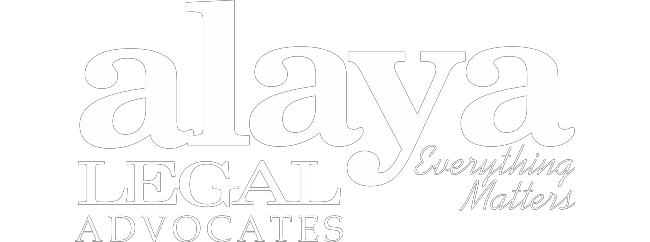THE OIL & GAS:
EZINE
-
-
Contents [August to November, 2014] - Reference Material
- Market Development- Global
- Regulatory & Judicial Development-India
- Feature- Annual Contract Quantity (ACQ) – Adjustments
-
Alaya Legal presents its sixth issue of the Oil and Gas: Ezine to its Readers. Web-links are provided for ready access to certain reference material. The contents are presented with a view to allow comprehensive update in a systematic manner, from the legal perspective.
Reference material
Categories of proven reserves of oil and natural gas across the globe may be accessed at,
https://www.alayalegal.com/docs/alaya_legal/Oil%20&%20Petroleum%
20Information%20&%20Updates/Zones.html
Explanation with respect to broad categorisation in the Oil and Natural Gas Industry may be
accessed at,
https://www.alayalegal.com/docs/alaya_legal/Oil%20&%20Petroleum%20Information%20&%20
Updates/Upstream, %20Midstream%20and%20Downstream.html
MARKET DEVELOPMENTS [GLOBAL]
Chevron confirms first oil production from Tubular Bells in the Gulf of Mexico
November 17, 2014
Chevron Corporation announced that the Hess Corporation operated Tubular Bells deep-water project, located in the U.S. Gulf of Mexico, has started crude oil and natural gas production. The field is located 135 miles southeast of New Orleans, in approximately 4,300 feet of water in the Mississippi Canyon area. The discovery well was drilled in 2003, and project construction began in October 2011. Tubular Bells is expected to deliver total production of approximately
50,000 barrels of oil- equivalent per day producing from three wells.
ONGC decides to invest over Rs. 10,600 crore in two major projects in Western Offshore to substantially enhance production
November 14, 2014
Oil and Natural Gas Corporation Limited (ONGC) has reportedly approved two major investment decisions valued over Rs. 10,600 Crore for further enhancing production from its Western Offshore fields. The projects are- Redevelopment (Phase-III) of its giant offshore field – Mumbai High (South) involving
a capital investment of Rs 6,069 Crore and Integrated Development of Mukta, Bassein and Panna Formations at an estimated Capex of Rs. 4,620 Crore. The implementation of the redevelopment project is expected to lead to incremental gain of 7.547 million tonne (MMT) crude oil and 3.864 billion cubic meter (BCM) gas by 2030. The Project comprises of drilling 36 new Wells and 34 sidetrack Wells, and facilities. The facilities under the project are scheduled to be installed by April, 2017. Drilling of wells and the overall project completion is scheduled for March, 2019.
GAIL to build, own and operate 1,800 km pipeline from Turkmenistan to India
November 13, 2014
GAIL (India) Limited along with state gas companies of Turkmenistan, Afghanistan and Pakistan have established a company that will build, own and operate the planned 1,800-kilometer Turkmenistan-Afghanistan-Pakistan-India (TAPI) natural gas pipeline. State Concern “Turkmengas”, Afghan Gas Enterprise, Inter State Gas Systems (Private) Limited and GAIL will own equal shares of the company, TAPI Pipeline Company Limited (TPCL). The company has been incorporated as a Special Purpose Vehicle in the Isle of Man, a British Crown dependency, located in the Irish Sea. This SPV would be responsible for finance, design, construction, operation and maintenance of the TAPI pipeline. The TAPI pipeline will export up to 33 billion cubic meters of natural gas a year from Turkmenistan to Afghanistan, Pakistan, and India over 30 years.
Rajahmundry starts restoring gas supplies to GAIL
November 12, 2014
Rajahmundry Asset has re-commenced gas supplies from its Mori, Mandapeta and Pasarlapudi Gas Collecting Stations to feeder lines of Gas
Authority of India Limited (GAIL). Gas supplies from 13 ONGC installations were stopped on GAIL’s request, after the latter’s pipeline burst at Nagaram in June 2014.
Multiclient seismic data offshore Mozambique available from Schlumberger
November 10, 2014
Schlumberger announced the availability of its multi-client seismic survey offshore Mozambique. The Schlumberger multi-client seismic data offered in collaboration with the National Petroleum Institute of Mozambique (INP) includes reprocessed 2D lines and newly acquired seismic data, and provides detailed imaging of the subsurface. More than 110,000 km of exclusive 2D seismic data, the most extensive data library of offshore Mozambique are available for licensing, including more than 36,000 km of recently acquired long-offset 2D data using the imaging technique.
GAIL signs MoU with State Oil Company of Republic of Azerbaijan to jointly pursue opportunities in LNG, upstream and petrochemical projects
November 3, 2014
GAIL (India) Limited announced the signing of a Memorandum of
Understanding (MoU) with State Oil Company of Republic of Azerbaijan (SOCAR). Under the MoU, GAIL and SOCAR intend to jointly pursue LNG opportunities through capacity booking, LNG procurement and promotion of LNG projects globally. Both companies shall also cooperate in optimization of LNG marketing, sourcing and shipping requirements. In addition, GAIL and SOCAR will pursue business opportunities in upstream assets across the world and joint investment in petrochemical projects.
ONGC and ONGC Videsh sign agreements with PVEP, Vietnam
October 28, 2014
Oil and Natural Gas Corporation Limited (ONGC) signed a Memorandum of Understanding (MOU) with Petrovietnam Exploration Production Corporation Ltd. (PVEP – a wholly owned subsidiary of Vietnam Oil and Gas Group (Petrovietnam), for mutual cooperation for exploration in the NELP Blocks of ONGC in Andaman and Cauvery Basins, subject to due diligence and negotiations on terms of participation. ONGC Videsh Limited also signed a Heads of Agreement (HOA) with PVEP for mutual cooperation for exploration in Blocks 102/10 & 106/10 of PVEP and Block 128 of ONGC Videsh in offshore Vietnam, subject to due diligence and negotiations on terms of participation.
Chevron sanctions stampede project in the deepwater U.S. Gulf of Mexico
October 28, 2014
Chevron Corporation announced that its subsidiary, Union Oil Company of California (Union), has reached a final investment decision to proceed with the development of the Hess Corporation-operated Stampede project in the deepwater U.S. Gulf of Mexico. Stampede is a deepwater subsea development, which will be tied-back to a newly constructed Tension Leg Platform. The project design capacity will be 80,000 barrels of crude oil per day. Project cost is expected to be approximately $6 billion.
Chevron announces first gas from Bangladesh Bibiyana expansion project
October 27, 2014
Chevron announced that its Bangladesh subsidiary has commenced natural gas production from the Bibiyana Expansion Project in the northeastern part of the country. The project included an expansion of the existing gas plant to process increased natural gas volumes from the Bibiyana Field, additional development wells and an
gas production capacity in Bangladesh by more than 300 million cubic feet per day to 1.4 billion cubic feet per day. In addition, the project is expected to increase the company-operated natural gas liquids production capacity by 4,000 barrels per day to 9,000 barrels per day. Chevron’s Bangladesh subsidiary has a 99 percent working interest in Bibiyana.
ONGC Videsh signs ‘Memorandum of Understanding and Cooperation’ with Pemex-Exploracion Y Produccion (PEP)
September 27, 2014
ONGC Videsh Limited (ONGC Videsh) and Pemex-Exploracion Y Produccion (PEP), the upstream subsidiary of Pemex, the National Oil Company of Mexico, have entered into a ‘Memorandum of Understanding and Cooperation’ (MOU) on 25th September 2014 to cooperate in the upstream hydrocarbon sector in Mexico.
ONGC Videsh signs letter of intent with PetroVietnam
September 16, 2014
ONGC Videsh Limited (ONGC Videsh) and PetroVietnam, the major oil producing state
owned company of Vietnam have signed a Letter of Intent (LOI) on 15th September 2014 to participate in the exploration of oil & gas in the offshore Vietnam.
The LOI provides for expansion of exploration activities by ONGC Videsh in Vietnam by considering participation in 2-3 additional blocks subject to technical and commercial viability and requisite approvals.
GAIL makes available alternate gas to industrial consumers in Gujarat in lieu of APM gas diverted to PNG & CNG Sectors
September, 14 2014
In pursuance to the directives issued by the Ministry of Petroleum and Natural Gas, GAIL has informed industries in South Gujarat about the restriction in supply of natural gas to non-Core sector in lieu of the supply of Administered Pricing Mechanism (APM) Gas to City Gas Distribution (CGD) sector for use of natural gas in domestic households (PNG) and transport sector (CNG) in the larger interest of the people. Considering the requirement of Gas to other industries, GAIL has offered to supply equivalent amount of alternate gas so that the production of such industries do not suffer. Some of the affected parties have already availed GAIL’s offer to utilize alternative gas in view of the reduced quantity of APM gas.
The additional gas being supplied to domestic and transport sector will enable the Government to reduce subsidy burden on account of LPG and will result in substantial saving in outgo of foreign exchange for import of LPG as well as crude oil.
ONGC Videsh signs memorandum of understanding with YPF S.A
September 03, 2014
ONGC Videsh Limited (ONGC Videsh) and YPF S.A., the major oil producing company of Argentina have entered into a Memorandum of Understanding (MOU) on 1st September 2014 to cooperate in the upstream hydrocarbon sector in Argentina, India and third countries.
ONGC Videsh signs production sharing contracts for two on-land exploration blocks in Myanmar
August 11, 2014
ONGC Videsh signed Production Sharing Contracts (PSCs) for two on-land exploration blocks B-2 & EP-3 in Myanmar on 8th August, 2014. ONGC Videsh participated in the Myanmar On-land Bidding Round 2013, launched by Myanmar Government during January 2013 and was awarded two onshore blocks namely B2 and EP-3 on 10th October 2013.
REGULATORY & JUDICIAL DEVELOPMENT [INDIA] Policy
Centre has notified GCV-based gas price of $5.05 mmBtu for five months
October 29, 2014
Ministry of Petroleum and Natural Gas has notified the new base price for domestically produced gas as $5.05 per million british thermal units (mBtu), based
on the gross calorific value (GCV). The new price will replace the existing price of $4.2 per mBtu and will be in effect for five months from November 1, 2014, to March 31, 2015.
Government notifies policy framework for Relaxations extension and clarification at the development and production stage under the
PSC regime for early monetization of hydrocarbon discoveries.
November 10, 2014
The policy framework deals with following:
a) Extension of time period for submission of declaration
of commerciality in respect of hydro-carbon discovery. b) Extension of time period for submission of FDP (field development plan) in respect of hydro-carbon discovery.
c) Deduction of minimum work programme in case of blocks overlapping with special economic zone,
reserve forest, defence research and development organization etc.
d) Swapping of 2D (dimentional) and 3D seismic minimum work programme.
e) Entry into subsequent exploration phase after paying cost of unfinished minimum work program of previous phases.
f) Condoning delays in submission of notice for entering into next phase.
g) Condoning delays in submission of annual work programme and budget and the appraisal work programme and budget.
h) Drilling of appraisal wells after submission of declaration of commerciality. i) Probing additional reservoirs during appraisal programme.
FEATURE [ANNUAL CONTRACT QUANTITY]
Annual Contract Quantity (ACQ) – Adjustments
The heart of a typical Gas Sales Agreement is the determination of annual contract quantity (ACQ), adjustments, if any thereto and terms of delivery thereof. The ACQ represents the maximum quantity of gas which the Seller must tender for delivery to the Buyer in the relevant contract year. The ACQ is subject to series of additions and deductions to arrive at the adjusted ACQ (also known as AACQ).
The following are additions made to the ACQ:
i. Make up gas – It may happen that under its take or pay commitment, the Buyer has made a take or pay payment in a particular year (Year 1), in which case such payment will be credited to a notional make up gas account for Year 1. Quantities of gas equivalent to the monies credited in the notional make up gas account may be taken by the Buyer in Year 2 or any subsequent year;
– provided, the Buyer has met its annual
take or pay commitment for Year 2 or such subsequent year.
– Up to the limit of the pre agreed threshold (the make-up gas gate or ATOPQ).
The Buyer and the Seller may agree to settle the payment for such make up gas based on the price of such gas at the time the Buyer takes delivery thereof.
The GSA must address the following:
– Seller’s liability for a shortfall, if any, where make up gas is being delivered to the Buyer.
– Conflict if any in case the Buyer seeks delivery of excess gas in Year 2 on account of difference in price of the excess gas and the make-up gas.
– The duration upto when the Buyer is entitled to take delivery of its accrued make up gas entitlements.
ii. Undertake gas – In case where the Buyer can exercise flow control or can control the gas pressure at the delivery point and the Buyer takes delivery of less than the quantity of gas which has
been delivered by the Seller in response to buyers’ nomination quantity, the resultant quantity of gas which is not taken delivery of by the Buyer is called the undertake gas.
The GSA must address the following: – Gas falling within an undertake gas tolerance and/or the amount of undertake gas that is aggregated over several nominations.
– Seller’s remedy for undertake gas.
– Buyer’s liability for undertake gas.
Undertake will exclude the following:
– any quantity of gas which the Buyer is entitled to claim as a relief on occurrence of a force majeure event.
– any quantity of gas which the buyer undertakes as a result of any act or omission of the Seller (including any failure of the Seller to deliver gas to the Buyer at the delivery point in respect of nominated quantity).
– any quantity of gas which the Buyer undertakes during the commissioning period.
– any quantity of gas which is within the undertake gas tolerance.
– any off-specification gas which the Buyer has refused to take delivery at the delivery point.
The following are deductions made to the ACQ:
i. Carry forward gas – means the gas that the Buyer has taken delivery of and paid for in excess of the ATOPQ, in a particular year, say Year 1. The Buyer receives credit for this excess quantity of gas which is carried forward to reduce the ATOPQ for Year 2.
The GSA must address the following:
– A situation whereby ATOPQ becomes zero or negative by introducing a provision which states that carry forward gas in each year may be recovered only upto a defined percentage of the ACQ of the following year.
– A situation where there is an overlap between accrued carry forward gas and recovery of accrued make up gas entitlements in the same year by stating that quantities of gas taken delivery by the Buyer in excess of the ATOPQ will first be applied towards reduction of any accrued make up gas entitlements and thereafter remaining quantities of gas will be classified as carry forward gas.
ii. Shortfall Gas – the quantity of gas equal to the difference between the gas tendered for delivery by the Seller and the quantity of gas which has been nominated or deemed to have been nominated
by the Buyer. The shortfall gas will not include;
– Gas tendered for delivery and not taken delivery of by the Buyer i.e., undertake gas.
– Gas not delivered on account of occurrence of force majeure events.
– Gas falling within a shortfall gas tolerance.
– Gas not delivered as a result of an act or omission of the Buyer.
– In respect of a maintenance day to the extent of the maintenance DCQ reduction applicable to such maintenance day.
– Gas not delivered to the Buyer during the commissioning phase.
– The quantity of gas in respect of which the Seller has given a gas deficiency notice and such quantity of gas is greater than the quantity of gas represented by the nominated quantity in force at the time when such notice is given by the Seller.
– Failure to deliver gas by the Seller where if such gas being delivered, will exceed the contract quantity in respect of the basic term or will exceed the ACQ for a particular contract year.
– Failure to deliver gas by the Seller where the Buyer has failed to make payments due to the
Seller under the GSA and such outstanding amount exceeds the threshold amount as defined in the GSA.
– Quantity of gas not delivered by the Seller to the Buyer at the Delivery Point (i.e., Make-up Gas).
– Quantity of gas not delivered by the Seller to the Buyer during the Shortfall Gas Extension Period or during the Make-up Gas Extension Period.
iii. Overtake gas – In case where the Buyer can exercise flow control or can control the gas pressure at the delivery point and the Buyer takes delivery of more than the delivered quantity of gas at the delivery point, the resultant gas taken in excess of the nominated quantity by the Buyer is called the overtake gas.
The GSA must address the following:
– Gas falling within an overtake gas tolerance and/or the amount of overtake gas that is aggregated over several nominations.
– Seller’s remedy for overtake gas.
– Buyer’s liability for overtake gas.
Overtake will exclude the following:
– any quantity of gas which the Buyer is entitled to claim as a relief on occurrence of a force majeure event.
– any quantity of gas which the Buyer overtakes as a result of any act or omission of the Seller.
– any quantity of gas which the Buyer overtakes during the commissioning period.
– any quantity of Gas which is within the overtake gas tolerance.
Next Issue
April, 2015
In-house contributors
– Sakshi Bawa, Oil & Gas Team – Downstream Sector
– Neha, Oil & Gas Team – Downstream Sector
Sources
– Norwegian Petroleum Directorate
– U.S. Energy Information Administration
– The International Energy Agency
– Organisation of the Petroleum Exporting Countries
– The Oil and Gas Journal
– Official web-sites of various oil & gas companies
|
||||
|
|||||


























